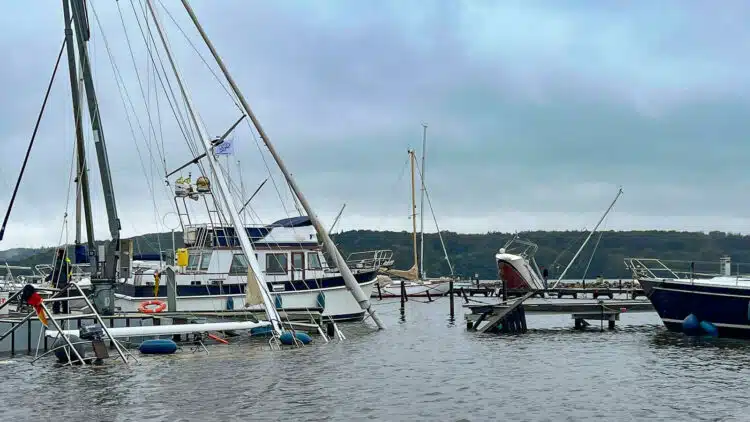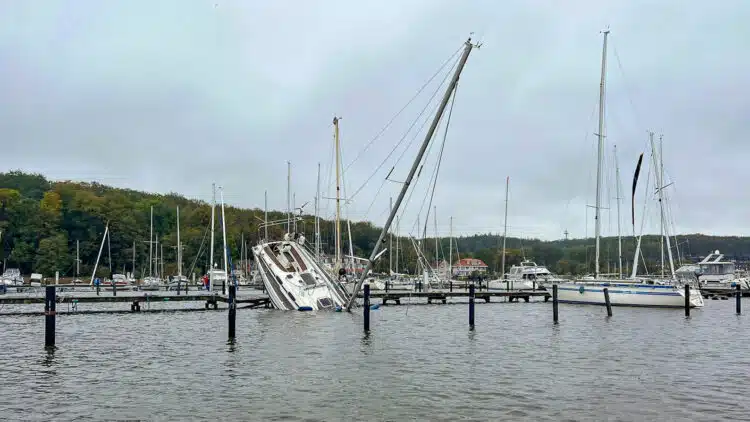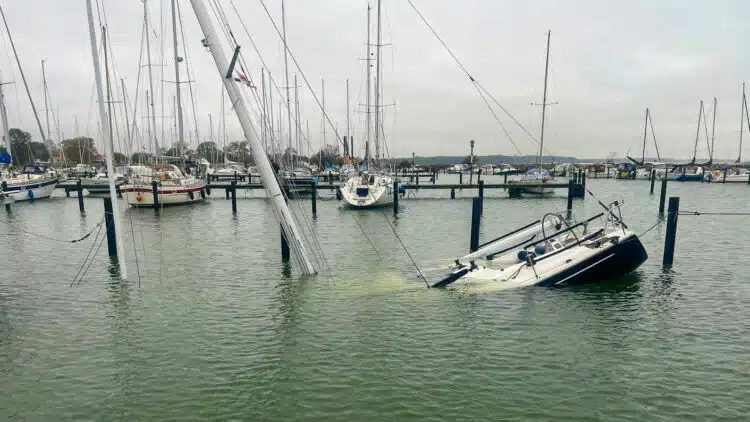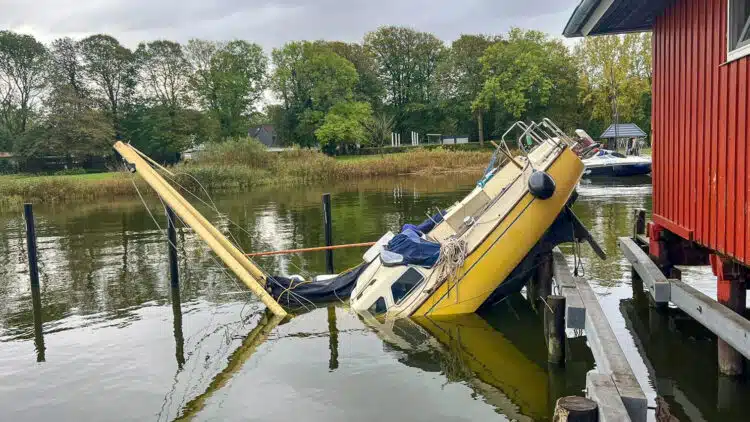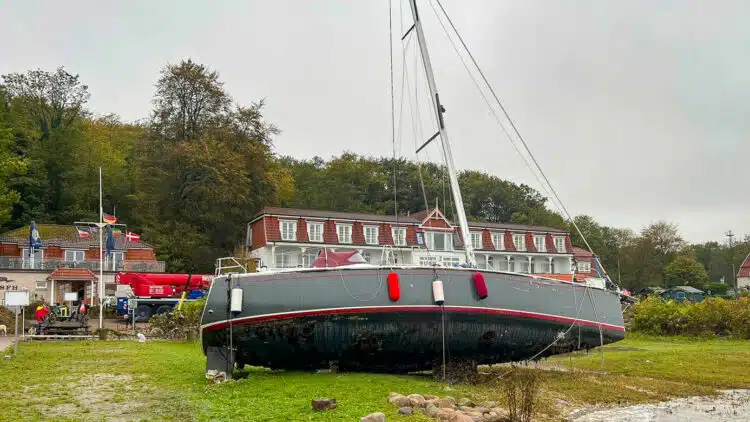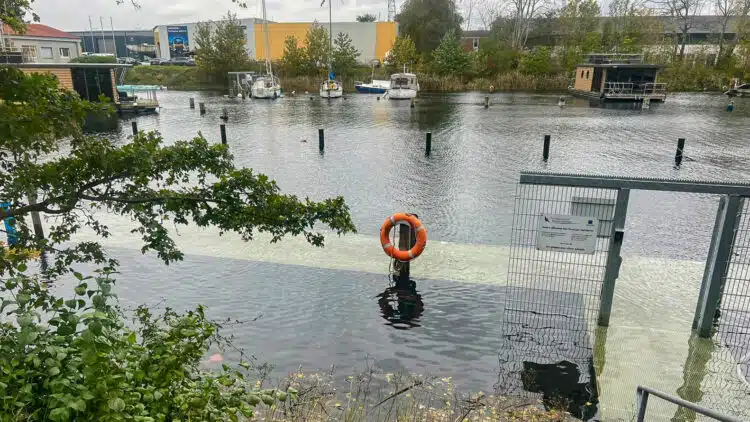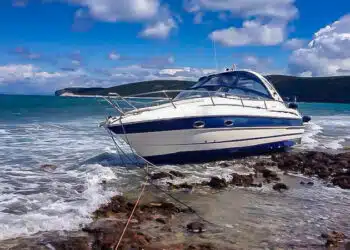The SeaHelp team led by head of operations René Haar had their hands full over the last few days. The reason was the Baltic Sea storm flood on the night of October 20/21, 2023, which the authorities currently classify as the most severe Baltic Sea storm flood since 1872. “A flood of the century”, summarizes SeaHelp operations manager René Haar.
René Haar had never seen anything like it: “Bridges were destroyed, floating bridges were partially lifted out, lines were torn or slipped off dolphins and bollards, causing the ships to drift and cause further damage,” says the experienced SeaHelp rescuer, who is responsible for the Flensburg and Danish South Sea area with his team. Ships were impaled on bridges or dolphins or smashed into each other.
The culprit was the Baltic Sea storm flood on the night of October 20/21, 2023, which the authorities currently classify as the worst Baltic Sea storm flood since the storm flood of 1872. “A flood of the century,” summarizes head of operations René Haar. The highest peak water level measured was 2.27 meters above mean sea level in Flensburg. The damage to the coasts, beaches, flood protection, harbors and boats in Germany was officially estimated at around 200 million euros.
Storm Babet hit an area of high pressure over Scandinavia – this led to strong easterly winds
How did it come about? A low-pressure system had moved from the west coast of Spain across the Bay of Biscay and the UK, where it had already been dubbed Storm Babet. Babet encountered an area of high pressure over Scandinavia, which led to exceptionally strong easterly winds – a textbook example of how a storm surge develops. The BSH (Federal Maritime and Hydrographic Agency) had issued a warning the day before about the approaching high tide on the German Baltic coast.
A lot of work for René Haar’s SeaHelp team: “In the run-up to the Baltic Sea storm flood, we secured countless ships and also some port facilities,” says the rescue professional. Often in vain: owners who had not properly secured their yachts had increasingly broken free, drifted and damaged or sunk other ships, says Haar.
Some of the yachts torn loose by the storm were secured by SeaHelp
He and his team were able to secure some of the yachts that were torn loose. Immediately after the storm, they were placed under cranes and saved from sinking. “In the case of the yachts that had already sunk, the damage was so severe that salvage without a crane was usually no longer possible,” says René Haar, so “heavy equipment” had to be used.
On the German Baltic Sea coast, values of 2.27 meters above the average water level were measured in Flensburg, officials announced shortly after the flood, making it “the worst flood in the last hundred years” in these parts of the Baltic Sea. In Germany, “Flensburg and the coastal areas of the districts of Schleswig-Flensburg and Rendsburg-Eckernförde in Schleswig-Holstein along the Baltic Sea were particularly affected”, it continued.
The Baltic Sea storm surge on October 20 “topped everything SeaHelp rescuers had ever seen”
More than two thousand firefighters, rescue services, police and technical relief organizations were deployed. The small SeaHelp Team Baltic Sea was also in constant operation. “I’ve seen a lot in my professional life,” says René Haar, who runs a service for yacht and boat engines in Flensburg. But for him, the Baltic Sea storm surge on October 20 “topped everything he had ever seen before”.
What can owners do to secure their ships in the event of the next impending storm surge? “Owners of yachts should read the relevant water level reports and listen to weather reports in good time,” advises René Haar. It becomes critical on the German Baltic Sea coast during longer periods of easterly winds. “Ships should be moved to sheltered harbors, if available to floating bridges”, says the rescue professional.
It becomes critical on the German Baltic Sea coasts during prolonged easterly winds; ships should then be moved to sheltered harbors
If this is not possible, an attempt should be made to deploy double lines, which can be adjusted to the rising water level, the SeaHelp man further advises. It should also be noted that in the event of a storm surge such as that of 20 October, “most fixed bridge installations are no longer accessible or are difficult to access from around 1.20 meters above sea level”.
And: the owner is generally responsible for securing the yacht. However, third parties such as SeaHelp could also be commissioned with storm protection if you live far away – and are a SeaHelp member.
- Services from SeaHelp
- Become a SeaHelp member
- Yacht insurance via SeaHelp
24h EMERGENCY CALL EUROPE: 0043 50 43 112
In an emergency, SeaHelp’s rescue boats can be called using the practical SeaHelp app, or by calling the free emergency number for Europe 0043 50 43 112 (or the alternative emergency number for Europe 00385 919 112 112).
Download SeaHelp app:
* terminal or telecommunication service costs may apply


